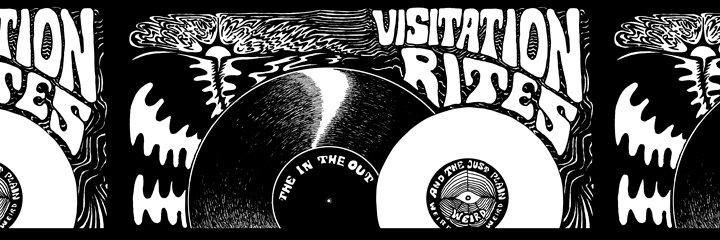
This month, Breaking World Records releases a limited edition 7 inch by Ducktails, a.k.a. Brooklyn-based musician Matt Mondanile, marking the onset of fall with a prayer for eternal summer. Though he proudly identifies suburban New Jersey as his heart’s true home, Mondanile’s sound is equally the product of four years on the Western Massachussetts noise scene, a prolonged stay in an immigrant neighborhood in Berlin and a thriving re-issue culture that brings psychedelic and world music gems back from the dead.
‘Beach Point Pleasant,” the album’s first track and centerpiece, is built on a 2-second instrumental loop from Gétatchèwe Kassa’s “Tezeta Slow,” featured on Buda Musique’s celebrated Ethiopiques series. “Tezeta,” Matt Mondanile explains, “means memory or nostalgia, and the song is kind of an ode to past beach times.” Repeated ad infinitum, the passage abstracts into a kind of indeterminate, “oriental” refrain, like the generic soundtrack of a Mondo Cane-style travel log. As yellowed, Technicolor images of virgin beaches, unfurling palm fronds and coconut milk straight out of the nut begin to take shape in our mind, we are lulled deeper into our post-colonial fantasy with the introduction of new voices. A meandering pentatonic guitar line bubbles leisurely upwards to the surface of the mix like a 1960’s Cambodian pop recording passed through an underwater chamber—wah wah in the fullest sense of the term. Meanwhile, ambient casiotones layer gently into the space between loop and guitar melody like small gusts of ocean wind. The word horizontal is key here; for all his vertical layering of sounds, Ducktails’ ode to lost time is closer to a plateau of sun-dappled bliss than an emotional riptide.
The rest of the songs on the recording possess a similar horizontal quality, each with its own, unique feeling-plateau. "Pizza time," a short track following “Beach Point Pleasant,” offers us a glimpse of the beach by night, marking a moonlit ceremony in which locals armed with traditional instruments, flaming torches and portable boom boxes descend upon the shore to dance and make merry. Each of Ducktails’ songs builds upon a single repetitive, root motif; here, he forfeits the archival sample for a cheezy up-tempo Casio beat, elaborating the “world kitsch” aspect of his sound through his twangy manipulation of guitar and bass.
On side two, Ducktails switches gears yet again with an evolving series of asymmetrical bongo phrases, artificial in source (drum machine) but human in their imperfection. If “Beach Point Pleasant” marks a nostalgic moment in the album’s evolution, and the second track, a celebratory one, “Gems 1 and 2” would seem to constitute their meditative conclusion. Soaring, synthetic drones stretch out across an early morning sky as Chinese flute melodies (perhaps sample, perhaps not) float in and out of earshot. Over time, the bongos become increasingly insistent, increasingly anarchic, as though their player, electronically mediated as he is, were imploring the sun to peak its head above the ocean horizon.
While it has absolutely no pretensions to being “intellectual”, Ducktails’ project rides a fine and nuanced line between East and West, the analog and the electronic, the manual and the pre-fab. Though it lends itself to repeated home listenings, it is probably best enjoyed in the way Ducktails himself likes to enjoy his favorite records: on the road, in his parent’s car, driving through the suburbs with the windows down.
Ducktails, s/t 7", Breaking World Records, 2008. Limited edition of 300. Handmade cover art.
Words: Emilie Friedlander
More Info:
Ducktails website
Ducktails Myspace
Breaking World Records Website
More Tunes:
Ducktails II, coming out soon on Tape Tektoniks, 2008

Like what we're doing here? Just a little pocket change gives Visitation Rites food to live on.









